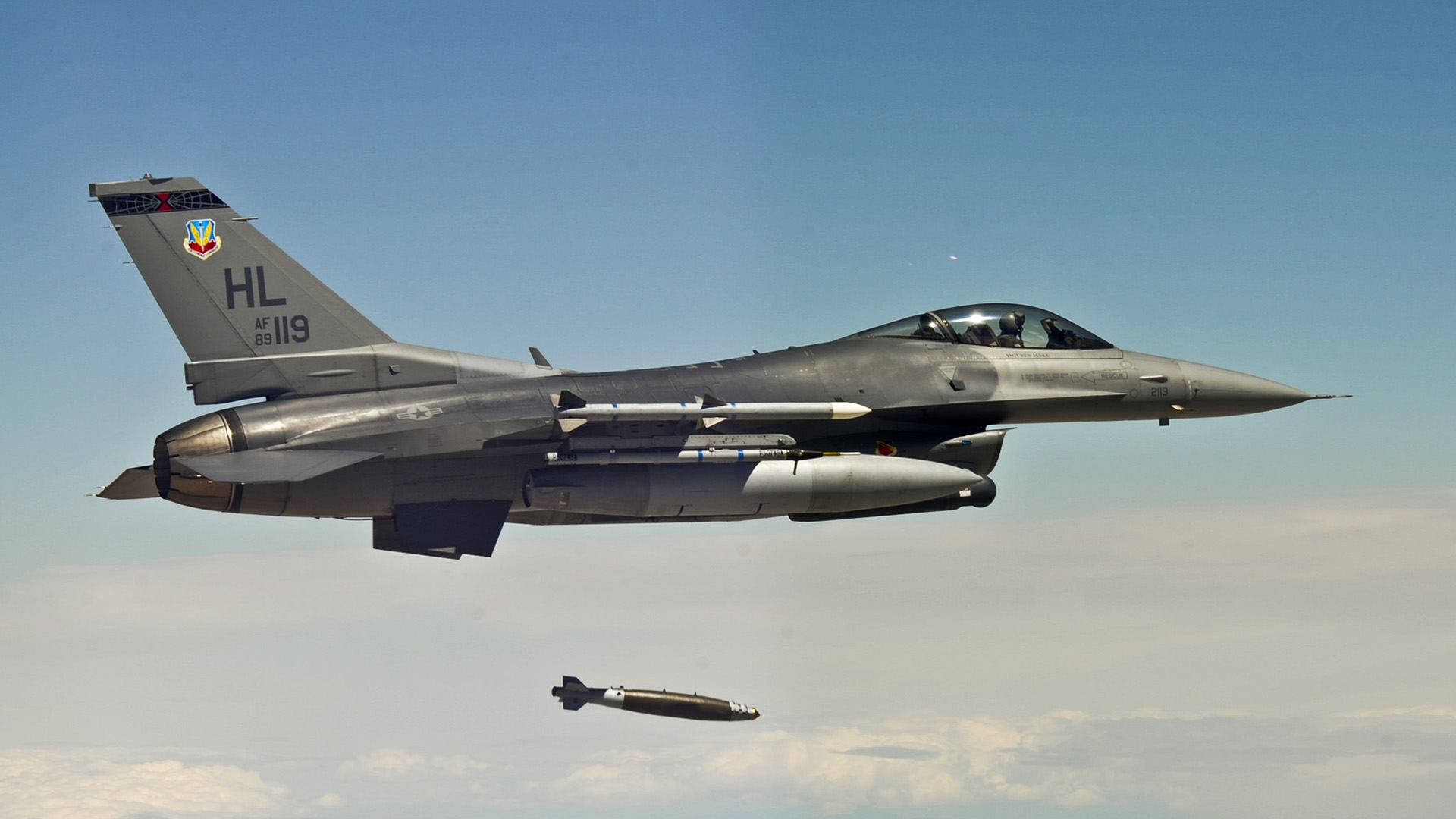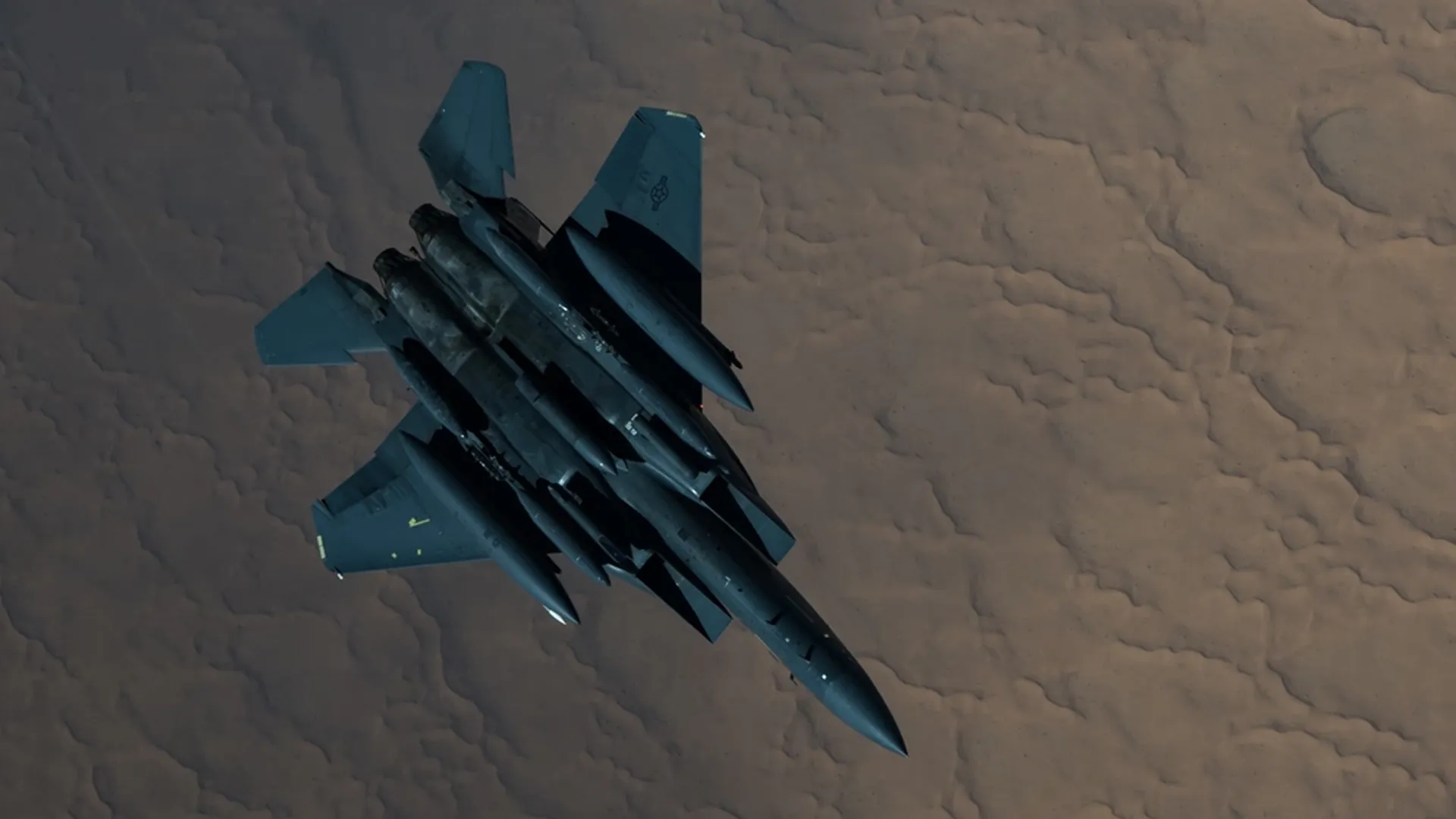

You don’t typically associate the word “Pickle” with things that go boom, but it’s actually the nickname for a little red button that U.S. military aviators push to drop ordnance.
The term “pickle” can be used as both a noun and verb, said retired Navy Cmdr. Guy Snodgrass, a former F/A-18 Hornet pilot.
“Most pilots (or aircrew, in multi-seat fighter/attack planes) refer to it as ‘pickling your bombs,’” Snodgrass told Task & Purpose. “Pilots also will say their wife ‘pickled’ their kid when they’re born.”
It is not 100% clear how “Pickle” became synonymous with “bombs away,” but a likely explanation is that the term is a reference to the Norden Bombsight that American aircrews used during World War II, Air Force historians, who asked not to be named, told Task & Purpose.
The bombsight was created by Carl Norden, an engineer who founded a company to mass produce his invention. While vying with a competitor to receive a military contract, Norden’s company claimed that its bombsight was so accurate that it could allow American bombers to hit a pickle barrel from 20,000 feet, the historians said. (In reality, the bombsight proved to be much less accurate. When more than 250 B-17 bombers attacked ball bearings factories in Schweinfurt, Germany, in October 1943, only one out of 10 bombs landed within 500 feet of their targets.)

Nevertheless, the “pickle barrel” myth has endured. In fact, the Air Force Dictionary in the mid-1950s defined “pickelbarrel bombing” as a figure of speech to describe hitting a very small target and highly accurate bombing, the Air Force historians said. Air Force Gen. Ira Clarence Eaker, a proponent of daylight bombing raids over Germany during World War II, later received the “bomb in a pickle barrel” trophy for his role in the American military’s strategic bombing campaign in Europe.
Subscribe to Task & Purpose Today. Get the latest military news, entertainment, and gear in your inbox daily.
Interestingly enough, “pickle” is not a term that military aviators typically use to describe firing missiles. Retired Air Force Gen. James “Mike” Holmes spent the first 20 years of his military career flying F-15Cs, which are designed to destroy enemy fighter aircraft.
“We said ‘Fox’ when we hit the button to launch air-to-air missiles,” Holmes told Task & Purpose.
Pilots would say “Fox 1” when firing AIM-7 Sparrow missiles; “Fox 2” when firing AIM-9 Sidewinders; and “Fox 3” when shooting AIM-120 Advanced Medium-Range Air-to-Air Missiles, Holmes said.
Fans of the 1996 movie Independence Day likely remember the pivotal moment in the film when Bill Pullman says “Fox 3” before firing a missile that hits an alien spacecraft for the first time, proving that Will Smith and Jeff Goldblum have successfully defeated the aliens’ shields, prompting Randy Quaid to declare: “Payback’s a bitch, aint it?”
Holmes noted that pilots of F-15E Strike Eagles, which are used for air-to-ground missions, do say “ready, ready pickle,” but he doesn’t remember anyone ever asking why.

Retired Air Force Lt. Col. Emmett Tullia, who was awarded the Distinguished Flying Cross for evading six surface-to-air-missiles over Baghdad in 1991, said he does not think the term “pickle” is exclusive to the fighter and bomber pilot community.
“My father was in the Air Force as well as the Army and we used the term as kids to mean the same thing,” Tullia, a former F-16 pilot, told Task & Purpose. “Not that we dropped bombs as kids but to release a free fall type of device.”
While the “pickle” has a long and storied legacy, it has not always been bathed in glory. During the Gulf War, F-16 pilots used the “pickle” button to release bombs and to fire AIM-9 Sidewinder missiles – a major design flaw that put pilots in quite the pickle, Tullia said.
“A lot of folks shot off AIM-9 missiles on their early on bombing missions when they had an air-to-air mode on their radar when they intended to release a bomb,” Tullia said. “The first missile I saw in the air during the Gulf War was an AIM-9 from some other nearby strike. On my first mission there were probably 50 F-16s converging just south of Talil Airbase. It was awesome. It reminded me of the World War II B-17 missions with airplanes everywhere. As I was looking down to try and see my bombs dropping, I saw a small missile sailing by down low. I thought to myself that I had no radar warning and besides, SAMs [surface-to-air missiles] would/should be a lot larger. Turns out it was an AIM-9. There was lot of that early in the conflict.”
But the “pickle” has continued to be the little red button that pilots push before dropping bombs. For bad guys everywhere, the pickle will always be the vegetable of doom.
The latest on Task & Purpose
- Air Force colonel goes scorched earth on fellow officers in fiery resignation letter
- ‘I need a cleanup crew’ — Navy pilot describes crapping his pants at 30,000 feet
- Top Air Force scientist allegedly got a sex worker a military research job so he could have an affair
- Marine reservists deserve more respect
- Air Force pits helicopter pilots against Russian-made Hinds in rare mock battle
Want to write for Task & Purpose? Click here. Or check out the latest stories on our homepage.
